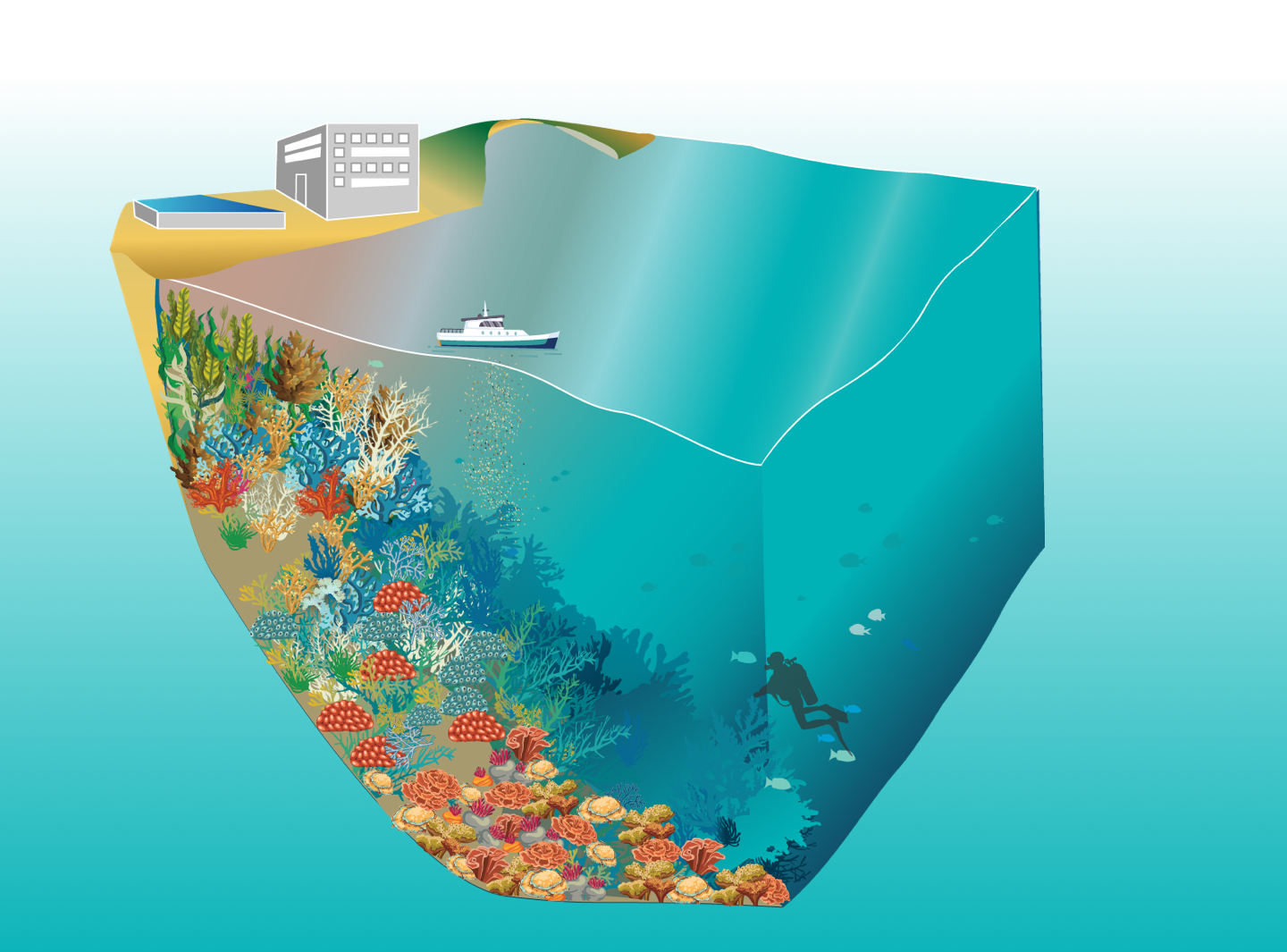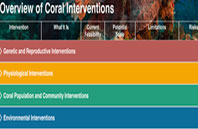Scientific Interventions to
Help Coral Reefs
Coral reefs are a major global ecosystem, treasured for their beauty and the many services they provide. Millions of people and thousands of communities depend on coral reefs for fisheries, tourism, and protection from coastal storms, in addition to their cultural value. But coral reefs are being lost at an alarming rate, averaging approximately 30-50% reductions in reef cover globally since the 1980s.
The losses stem from many problems, including habitat destruction, pollution, and overfishing, but coral reefs also face severe consequences from climate change. Bleaching events, disease, and problems growing hardened reef skeletons are becoming more common. A set of reports from the National Academies focuses on numerous interventions that could enhance the persistence and resilience of coral reefs in the face of these challenges.
SCROLL DOWN FOR MORE
ADDRESSING CORAL LOSSES
Watch these videos to learn why coral interventions are needed. English and Spanish-language closed captions are available.
What Is the Long-Term Hope for Coral?
The long-term survival of corals depends on addressing the climate crisis, but many won’t survive without help now. New interventions are being developed and tested that have the potential to buy time for coral reefs until conditions improve.
Why Consider Coral Interventions?
Existing approaches for managing coral reefs are not designed to address these impacts from climate change. This video overview highlights the urgency to find new ways to save coral reefs and introduces the review of these novel tools by a National Academies committee.
SCROLL FOR MORE VIDEOS
Coral Resilience Science in Action
Watch these videos to learn about research being conducted on coral interventions. English and Spanish-language closed captions are available.
What Are Potential Near-Term Solutions?
Scientists are developing a toolbox of options for increasing coral reef resilience. One possible tool being tested with Caribbean corals, assisted gene flow, has the potential to assist the spread of resilient coral genes.
Can Human-Assisted Evolution Make Corals More Resilient?
Scientists are exploring ways to accelerate corals' capacity to adapt to the rapid rate of change in their environment. While these scientists face the challenge of managing risks from uncertain outcomes, the threat to corals from doing nothing is certain.
WHAT ARE THE POTENTIAL INTERVENTIONS?
Explore this interactive graphic to learn about potential interventions, which include genetic and reproductive alterations, physiological interventions such as the use of nutritional supplements, efforts to change environmental conditions, and population level changes such as relocating corals.
Hover or click on icons below to view more information





How Far Along Are the Potential Interventions?
Explore this interactive table to see what has been learned so far about the interventions and their potential to help coral. This summary of interventions contains information from the A Research Review of Interventions to Increase the Persistence and Resilience of Coral Reefs (2019) report.
